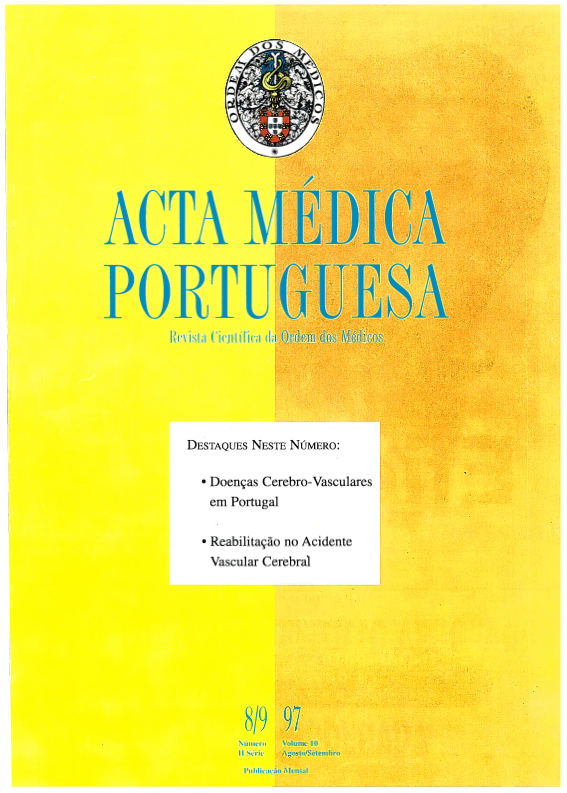The endovascular treatment of cerebral arteriovenous aneurysms and malformations.
DOI:
https://doi.org/10.20344/amp.2458Abstract
Despite the progress made in cerebral aneurysm microneurosurgery, some morphologic and anatomic characteristics, or also clinical reasons, make surgical clipping of the aneurysmatic column difficult or unfeasible, justifying an endovascular therapeutic alternative. Despite the great progress made, the risk of endovascular intervention with microballoons is significant, particularly in the acute post-haemorrhagic phase: 17.9% mortality and 10.7% morbidity in endosaccular embolisation therapy with the detachable balloon maintaining the arterial lumen permeable. The use of the GDC system (Guglielmi Detachable Coil) has permitted the treatment of proximal and distal aneurysms in the carotid and vertebrobasilar arterial regions. Microcatheterisation also allows intravascular treatment of the vasospasm, by mechanical means--angioplasty, or by pharmacological vasodilatation. With the GDC system one can obtain a complete occlusion of small and medium aneurysms in over 85% of cases, definitive morbidity of 5% to 7% and mortality of 1% to 3%. The objective of AVM endarterial occlusions is to obliterate the nidus through the arterial pedicles that can be microcatheterised by means of a certain embolic agent (Cyanocrilate, PVA or other embolic products). Thus, it is possible to reduce the dimension of the nidus as well as diminish the severity of the arteriovenous shunt, later facilitating the operation or radiosurgery, with the possibility of complete surgical removal in 96% of patients after embolisation. The mortality directly related to this endovascular therapy is approximately 0.9% with severe morbidity below 2%. Complete obliteration of a cerebral AVM can be achieved with endovascular techniques in 15% to 20% of cases, particularly in small lesions, sustain AVMs require careful multidisciplinary discussion aimed at finding the best treatment for each case.Downloads
Downloads
How to Cite
Issue
Section
License
All the articles published in the AMP are open access and comply with the requirements of funding agencies or academic institutions. The AMP is governed by the terms of the Creative Commons ‘Attribution – Non-Commercial Use - (CC-BY-NC)’ license, regarding the use by third parties.
It is the author’s responsibility to obtain approval for the reproduction of figures, tables, etc. from other publications.
Upon acceptance of an article for publication, the authors will be asked to complete the ICMJE “Copyright Liability and Copyright Sharing Statement “(http://www.actamedicaportuguesa.com/info/AMP-NormasPublicacao.pdf) and the “Declaration of Potential Conflicts of Interest” (http:// www.icmje.org/conflicts-of-interest). An e-mail will be sent to the corresponding author to acknowledge receipt of the manuscript.
After publication, the authors are authorised to make their articles available in repositories of their institutions of origin, as long as they always mention where they were published and according to the Creative Commons license.









